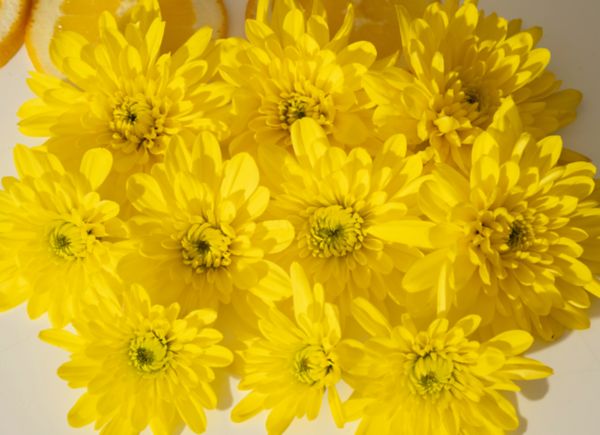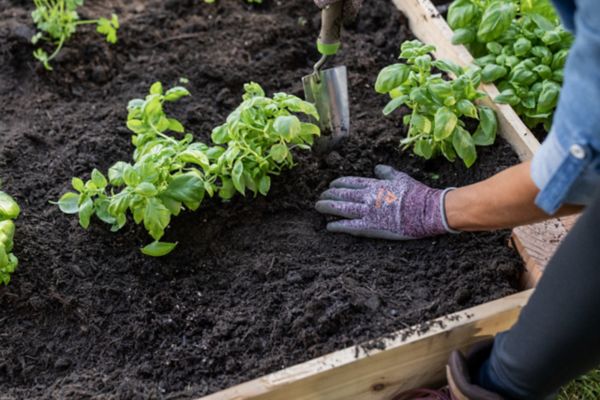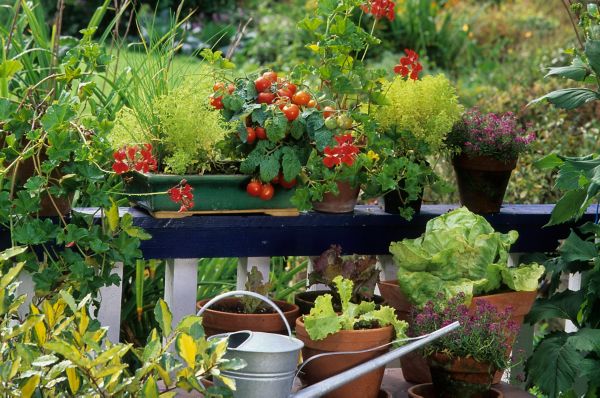How to Grow Avocados
Authored by Leah Chester-Davis
This versatile food is popular in numerous dishes for breakfast, lunch, and dinner. Though it is technically a fruit – botanically it is a large berry with a single seed – some categorize it as a vegetable because nutritionally it is closest to vegetables. Regardless of what you call it, avocado is quite tasty and a great addition to any meal.
Avocados are rich, creamy, and buttery, a delicious complement to any meal. They contain healthy, monounsaturated fats that help slow digestion and keep blood sugar levels even. They have vitamins such as folate, which is associated with lower heart risks, and lutein, which is touted for eye health. They contain other minerals and fiber. It’s always good to hear that food that is delicious is also good for you.
When it comes to breakfast, it is hard to beat the classic pairing of eggs, bacon, and avocado. They elevate omelets and any egg dish, are popular mashed up for avocado toast, and even can be an ingredient in smoothies. For lunch or dinner, they can be sliced up and added to all kinds of sandwiches. Avocado slices or chunks are popular in salads with other ingredients like tomatoes and red onions, arugula, kale, or even a mixture of fruit. They pair well with shrimp, fish, and other seafood. The possibilities are endless, though they perhaps are best known as the main ingredient in guacamole.
About avocado
| Botanical name: | Persea americana |
| Common name: | Avocado |
| Plant type: | Medium to Large Tree |
| Size: | 30 to 65 feet |
| Sun exposure: | Full sun |
| Soil type: | Sandy Loam |
| Soil pH: | 5 to 7 |
| Hardiness zones: | 9 through 12, with limited results in 8 |
| Average first frost: | Varies by region |
| Average last frost: | Varies by region |
| Container friendly: | Yes |
| Beginner friendly: | Yes |
Growing
Avocados are native to southern Mexico and grow as a medium to large tropical-like tree with deep green leaves that are large and leathery in appearance. They are classified as an evergreen, though some varieties may lose their leaves for a brief time.
They require a warm climate to grow outdoors, preferably zones 9 through 12. While homeowners in colder areas may be able to grow them outdoors, it can be challenging. In a cooler zone, such as 8, you likely will need to grow in a container that can be brought indoors during cold weather. If you try to grow them in-ground outdoors in zone 8, buy cold-hardy varieties and site them in the warmest spot in your yard. You likely will need to add extra mulch and water in the winter and even drape the tree with a blanket or add a heat source during freeze events.
They need plenty of sun, at least 8 hours per day, and they like temperatures that are at least 70 degrees. Avocados are susceptible to frost and wind and need to be in a protected area. They are also sensitive to extreme heat, which may cause flower and fruit drop.
Just like any other fruit or vegetable, there are several varieties. The varieties are classified into three groups or races: West Indian, Guatemalan, and Mexican. Avocados have both female and male flower parts and are self-pollinating, some more so than others. Look for varieties such as ‘Waldin,’ ‘Lula’ or ‘Taylor’, which fruit well when planted alone. If planting more than one tree, it may be beneficial to plant both an “A” and “B” type variety that open simultaneously, which will help ensure good pollination and fruit set.
Hass, a Guatemalan/Mexican hybrid, is the most widely grown and available in stores. It’s good for the home gardener, too. Others for home gardeners, according to California Extension, are Reed and Fuerte varieties. Reed sets fruit when no other avocados are nearby. Fuerte needs other varieties nearby such as Hass, Lamb Hass, or Reed.
Hass, a Guatemalan/Mexican hybrid, is the most widely grown and available in stores. It’s good for the home gardener, too.
Planting
Sandy loam that is deep and well drained is best. Clay soils are typically not suitable. The roots are sensitive. California Extension cautions against adding manure or mushroom compost when planting due to high salts and ammonia. If adding mulch, use predominately chipped wood. Site your tree in the warmest, most well-drained spot in your landscape.
If planting in a container to bring it inside for the winter months, it needs to be about 18 to 24 inches across and deep. Plant in a soil mix that is blended with sand. Avocados need lots of bright light so keep your plant happy in a sunny window.
While avocado pits may be used to get a plant started, and often is a fun science experiment, it can take years to grow a tree from a pit and it may never produce. Instead, select a healthy nursery tree. To give your tree the best start, remove a large area of grass, at least 3 feet in diameter and up to 10 feet. Dig a hole that is three times the diameter and three times as deep as the container the tree comes in to make it easier for roots to expand.
Avoid applying fertilizer, compost, or topsoil to the planting hole. Instead backfill the hole with some of the native soil from the dug hole. Place the tree in the hole so that the soil from the container is level with or slightly higher than the surrounding soil level. Fill soil around the roots and lightly tamp it down. Water in thoroughly.
After planting, water trees every other day for the first couple of weeks and then one to two times each week for the first couple of months, and during prolonged dry periods. Do not overwater, which can result in root rot.
Keep weeds suppressed by using a 2- to 6-inch layer of bark or wood chips. Keep mulch at least six inches away from the tree trunk. Pruning encourages lateral branching and growth. It is also important to keep a smaller tree which will make it easier to care for it and to harvest the fruit. Extension recommends selectively removing a few upper limbs back to their crotches each year to help prevent the loss of lower tree canopy due to shading.
Fertilizing
- Florida Extension recommends fertilizing young trees every 1 to 2 months during the first year. Common fertilizer mixes such as 6-6-6-2 or 8-3-9-2 are recommended. Many people are accustomed to three numbers on fertilizer bags which are nitrogen (N), phosphorous (P), and potassium (K). The fourth number in this recommendation is magnesium (Mg). The recommended amount is ¼ pound of a fertilizer mix per tree per application. After the first year, 3 or 4 applications each year in amounts proportionate to the increasing size of the tree are sufficient. Typical amounts the second year are ½ pound to 1 pound per tree for each application.
- In addition, Extension recommends 3 to 4 annual nutritional sprays of copper, zinc, manganese, and boron during the spring and summer for the first 4 to 5 years.
- Because avocados are susceptible to iron deficiency due to alkaline or high pH soil, periodic applications of an iron chelate soil drench may be needed.
Controlling Pests, Diseases, and Other Problems
- Among insect pests are avocado looper, various scales, avocado red mites, borers, avocado lace bugs, and red-banded thrips. Control measures may not be needed for home gardeners unless insect populations are quite large. The best bet is to contact your local Extension office for recommendations.
- Diseases include avocado scab, Cercospora spot, avocado root rot, powdery mildew, and sun-blotch. Avocado scab may best be addressed by selecting a variety that is resistant so that control may not be necessary. Cercospora spot, which appears on the fruits and leaves, may require a spray program. Root rot is attributed to poorly drained soil and a drench may be needed. Powdery mildew which appears as a white powdery growth may not warrant control measures. Sun-blotch is sunken yellow or whitish streaking and distortion of twigs, leaves, and fruit. Extension recommends destroying infected trees.
Harvesting and Storing
Grafted trees produce after three to four years. Avocado seedlings can take up to 10 to 15 years to produce fruit. Depending on the region and with more than one variety, harvest times can be throughout the year.
Avocados are like bananas in that they do not ripen on the tree. However, that does not mean you should leave the fruits on the trees indefinitely, but you do not have to harvest them all at the same time. During the season of maturity for your variety, you can stagger your harvest times, leaving some of the fruit on the tree, picking it when you want to eat it. Typically, it takes three to eight days from the time you pick an avocado until it ripens.
Different varieties may have slightly different harvest times or seasons of maturity.
Storing
After harvesting, allow the fruit to ripen at a temperature of around 60 to 75 degrees F. Do not store in the refrigerator until the fruit is ripe. They can be frozen, but the quality will not be the same as fresh. Instead of freezing whole or sliced, puree and add 1 tablespoon lemon juice for every two avocados.
They can be frozen, but the quality will not be the same as fresh. Instead of freezing whole or sliced, puree and add 1 tablespoon lemon juice for every two avocados.
Expert Tips
- As with any other fruit tree, healthy cultural conditions are important for success and to reduce chances of pests and disease problems. Select disease-resistant varieties.
- Talk with your county Extension office or local garden center for best varieties for your region. Popular varieties are ‘Hass’, ‘Lamb Hass’, ‘Reed’, and ‘Fuerte’. If in a colder area such as zone 8, look for a cold-tolerant variety such as ‘Lula’, ‘Meya’, ‘Taylor’, ‘Tonnage’, or ‘Brookslate’.
Frequently asked questions
Where should I plant an avocado to give it the warmest spot in my landscape?
Typically, the south or southeast side of a house is the warmest. Plant your tree at least 8 feet away from the house to give it room to grow. And make sure you are in zone 9 to 12 or select a cold-hardy variety.
What causes the avocado flesh to turn brown when I cut the avocado open?
Just like apples, the fruit oxidizes when air hits it, turning it brown. Sprinkle it with lime or lemon juice to prevent the discoloration.





